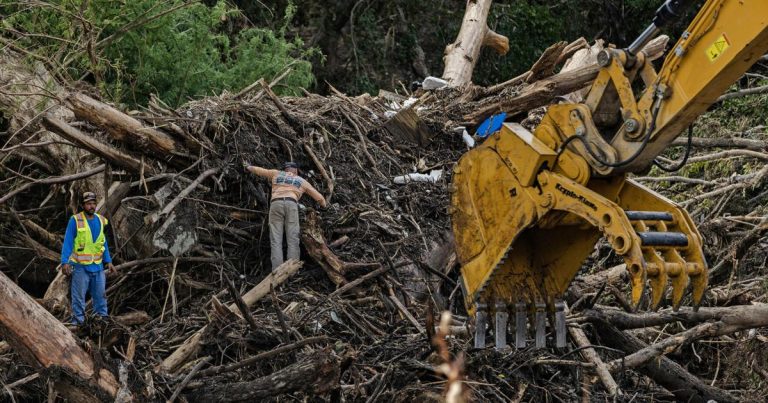Misinformation Plagues Disaster Response in Texas, Exacerbated by AI Chatbots
The onslaught of natural disasters in Texas, from hurricanes and floods to wildfires and winter storms, has consistently been accompanied by a surge of misinformation, hindering rescue efforts and exacerbating public anxiety. This insidious problem, already a significant challenge for emergency responders and government officials, is now being amplified by the proliferation of AI chatbots, readily accessible tools capable of generating convincing yet fabricated information at an alarming rate. The ease with which these chatbots can produce realistic-sounding narratives, coupled with their growing accessibility, creates a fertile ground for the spread of false rumors, fake news, and conspiracy theories, further complicating disaster response and recovery.
Historically, misinformation during Texas disasters has spread through various channels, including social media, word of mouth, and even manipulated images and videos. False reports about the severity of damage, the availability of resources, and the safety of specific areas have often led to panic buying, traffic jams impeding evacuation routes, and the diversion of critical resources away from genuine needs. In the aftermath of Hurricane Harvey, for instance, false reports of breached levees and contaminated water supplies caused widespread fear and hampered relief efforts. Similarly, during the 2021 winter storm, inaccurate information about power grid stability and shelter availability led to dangerous decisions and further hardship for affected communities. These past experiences underscore the very real and damaging consequences of misinformation during crises.
The emergence of AI chatbots adds a new and potentially more dangerous dimension to this existing problem. These tools, designed to generate human-like text, can be easily exploited to create highly convincing but entirely false narratives about disaster situations. Imagine a scenario where a chatbot is prompted to generate a story about a nonexistent chemical spill caused by a hurricane. This fabricated story, if shared widely on social media, could trigger mass panic and misdirect emergency resources, even if official sources quickly debunk the claim. The speed and scale at which chatbots can create and disseminate such misinformation pose a formidable challenge to traditional fact-checking mechanisms and public information campaigns.
The potential for malicious actors to weaponize AI chatbots for disinformation campaigns during disasters is a significant concern. These bad actors could use chatbots to spread targeted misinformation designed to undermine public trust in government agencies, sow discord within communities, or even incite violence. Imagine a scenario where a chatbot is used to generate false reports about discriminatory practices in the distribution of aid, fueling resentment and potentially sparking unrest in already vulnerable communities. The ability of chatbots to personalize and tailor misinformation to specific demographics further amplifies their potential for causing harm.
Combating this evolving threat requires a multi-pronged approach involving technological solutions, public education, and media literacy initiatives. Developing sophisticated detection tools capable of identifying AI-generated misinformation is crucial. These tools could leverage natural language processing and machine learning algorithms to analyze text for telltale signs of chatbot authorship, such as unusual phrasing, repetitive patterns, or inconsistencies in narrative style. Social media platforms also have a responsibility to implement robust content moderation policies and mechanisms to flag and remove potentially harmful misinformation generated by chatbots.
Beyond technological interventions, empowering citizens with the skills to critically evaluate information and identify misinformation is essential. Media literacy programs should focus on teaching individuals how to assess the credibility of sources, identify manipulated content, and recognize the hallmarks of AI-generated text. These initiatives should be integrated into school curricula and promoted through public awareness campaigns. Collaboration between government agencies, media organizations, and tech companies is crucial to developing a comprehensive strategy to counter the growing threat of AI-powered misinformation during natural disasters. Only through a collective and proactive approach can we effectively mitigate the risks and ensure that accurate and reliable information reaches those who need it most during times of crisis. The safety and well-being of vulnerable communities depend on it.


